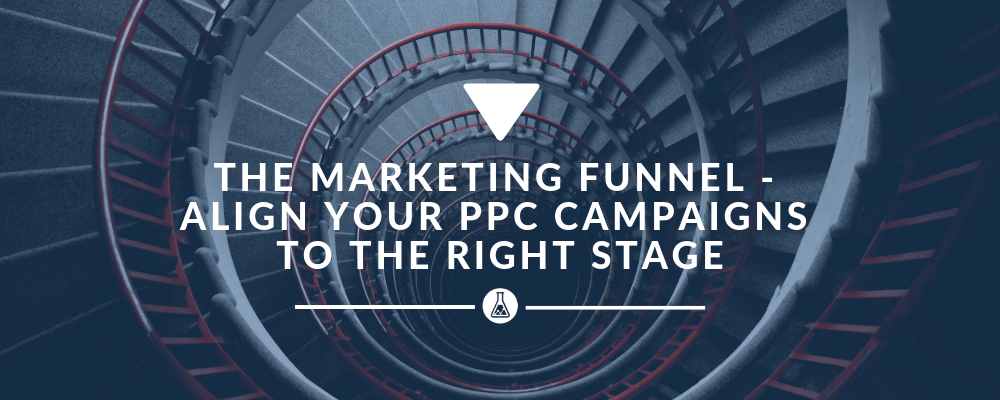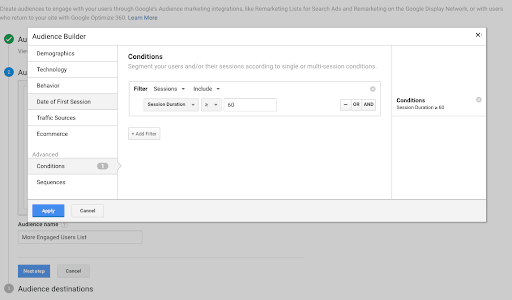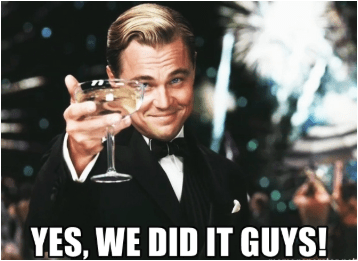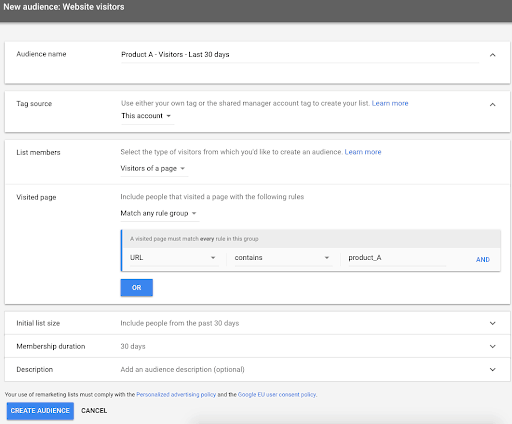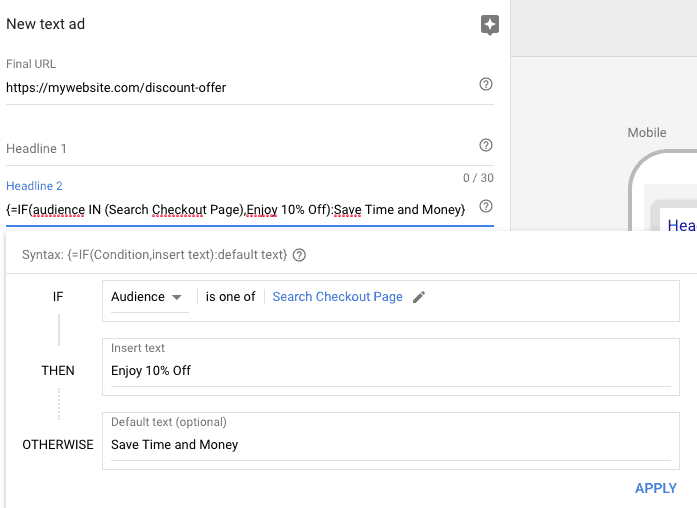Okay, business minded folks. Okay, hard working fellow marketers. Let’s start breaking the chains of the “one size fits all” marketing strategy. We all know those times are long gone. By the end of this article you’ll be mastering the digital marketing funnel. We’ll show you how to align your PPC campaigns to your business’s sales funnel stages and what KPIs (Key Performance Indicators) to look at when measuring your success.
You’ll be able to navigate new waters and make your business thrive. Let the journey begin!
“The journey is never-ending. There’s always gonna be growth, improvement, adversity; you just gotta take it all in and do what’s right, continue to grow […]” – Antonio Brown.
I’ve started this post with the word “journey” in mind. Because our goal – as business owners or marketers – should be to help our customers on their journey’s paths. We should make it easier for them to achieve what they want, when they want it.
WHAT IS THE PPC MARKETING FUNNEL
The PPC marketing funnel is a fairly well-known concept that describes the customer journey from the awareness stages all the way down to the actual purchase. This funnel allows marketers to segment their audience by user intent, in order to create the best strategies to serve the right messages to the right people, at the right time.
Marketers should adjust the way they approach users as they move through the sales funnel and their needs change. The more your ad message aligns with each prospect’s specific needs, the more effective it will be in stimulating them to keep moving forward.
MAP OUT YOUR BUYER’S JOURNEY
When people are leaving your website, they are not necessarily saying “no, thanks.” Instead they are saying “Not right now.” With time, you have the opportunity to get to know each other better and eventually, at some point, they are more likely to say, “yes.”
However, you should definitely have a well-established marketing funnel strategy for each type of customer (buyer persona) you are targeting on the purchase journey.
For the visual learners, here’s a well-known graph on the marketing funnel stages:

So, what marketing strategy should you apply at every stage of the funnel? Let’s break it down.
TOFU - TOP OF FUNNEL PPC Campaigns
TOFU is the awareness stage. In this phase, you should develop strategies to help you reach potential users who are not yet aware of your product or service. So, your goal now is to bring people to your website and create brand awareness. There is a bit of educating that needs to be done at this stage.
How to make people aware of your product or service?
Here are the suitable digital marketing tactics for this stage:
- Display ads – broad interest targeting. It is difficult to brand a product/service that people aren’t aware of. And this is where Display/Social can help. Ads giving free value are suitable for this stage (eg: blog posts, white papers, e-books etc). As for display targeting methods, it is recommended to use Topic targeting – which allows you to target all sites and pages about a certain predefined topic, or Keyword contextual targeting, in case your topic isn’t among Google’s.
- Video Ads. Video advertising is an amazing way to generate brand awareness on YouTube. You can try interest targeting or in-market audiences, with both TrueView ads (in-stream and video discovery) and bumper ads.
- Social media ads – mostly Facebook, Instagram or Pinterest. For instance, in Facebook Ads you could target your audience based on topics or interest. Also, you can create lookalike audiences, meaning you can reach new people on Facebook who are similar to your most valuable audiences.
- Search Ads – the TOFU customer will most probably use non-branded keywords. They know about a product or a service, but are unfamiliar with the brand. For example, the top funnel customer will look for: “digital photo camera,” “what are mirrorless cameras,” etc. In one of our 100 Days of Adwords Help series, we’ve talked about Sales Funnel Keywords, so check these out too.
- Shopping Ads – you should definitely use the reverse engineering Google Shopping Campaigns structure based on user intent. At this stage, target the general and low converting terms. Use negative keywords to keep all under control.
TOFU KPIs
Keeping in mind that you have to make people see and remember your brand, the Key Performance Indicators for this stage are mostly on-site engagement metrics and brand metrics:
- Bounce rate
- Time spent on site
- Reach
- Impressions
- CPM (cost per thousand impressions)
Most of the time, the CPA (Cost per Acquisition) for the high-funnel users tends to be the highest and the CVR (Conversion Rate) the lowest. But remember that this is the awareness stage, so consider this an investment in a future sale from a different stage.
TOFU Call To Action
Generally, this stage requires a very light CtA (Call to Action) or no CtA at all.
MOFU - MIDDLE OF FUNNEL Advertising Campaigns
MOFU – Middle of funnel. This is the interest and consideration, or desire stage, also known as the “think” stage. Middle of funnel buyers are closer to making a purchase because they understand that they have a need now and they are genuinely interested in learning more. Also, this is the phase where search ads and social ads work so well together.
Campaign types suitable for MOFU:
- Search Ads. Serve ads to people who are actively searching for a product or service they are interested in. Continuing with our camera product example, the MOFU customers know what they’re looking for in a digital camera, and will begin to narrow down their search using certain qualifying terms. For instance, they might search for “mirrorless photo camera,” or “full-frame mirrorless camera,” or “how to choose the best mirrorless camera,” etc.
- Display ads: You can show ads to specific audiences, based on their interests and habits, what they are actively researching, or how they have interacted with your website. Try to create a custom Intent audience segment, or a custom affinity audience.
- Video Ads: drive deeper awareness for your product or service with a video ad sequence campaign.
- Soft Remarketing:
- Remarketing to video viewers. You can easily create RLSA (Remarketing Lists for Search Ads) from YouTube engagements;
- Video ads retargeting;
- Remarketing to blog readers;
- Remarketing to people who have spent a minimum time (let’s say 60 seconds) on your website and were more engaged. You can create this kind of list in Google Analytics.
MOFU KPIs to monitor
At this stage, your goal is to get people to understand and want to buy your brand, so you should focus on general metrics and New User metrics:
- Clicks
- CPC (Cost per Click)
- Views
- CPV (Cost per View)
- New User conversions
- New User conversion rate
- New User avg. CPA
- New User ROAS
Considering that these campaigns’ purpose is to get your mid-funnel user to the next stage and convert as a bottom funnel user, you should also have a look at the Assisted Conversions, inside the Attribution report in Google Ads, for your Search ads campaigns. For your Display campaigns, check the View through conversions metric.
MOFU CTAs
In order to provide information and drive traffic to your website, the best CtAs here are:
- Find out more
- See more
- Learn more.
BOFU - BOTTOM OF FUNNEL CAMPAIGN TYPES
Here we are, heading towards the final stages of our journey. BOFU is where your audience has the strongest commercial intent. This is where your prospect converts into a customer. What a joy!
We’ve covered BOFU before in our Foundations of Retargeting: The Bottom of Funnel List, so please take a look inside for more strategies on how to retarget like a champ.
Feed the bottom of the funnel using these campaign types:
- Branded Search. Congrats! The user is now so aware of your product that she wants to take action and will probably search for it using your brand name. (eg: “buy Nikon Z7 mirrorless camera).
- High intent Search campaigns. Search ads are the best strategy for this stage. So make sure you appear on the top of the SERP. You should have keywords that trigger the following search terms:
- “Buy”, “quote”, “call”, “contact”, “request” or any other purchase-related or contact-related terms;
- “How much”, “what’s the price of”, “cost of” or any other comparison and pricing terms;
- Location-specific terms like state, city etc.;
- Competitors terms.
- Shopping campaigns. You can target BOFU users with brand, high converting or very specific terms. Read more about the 2 and 3 campaign structure for your PLAs in our previous post.
- Hard Remarketing – Display Remarketing and Search Remarketing. Users are more likely to convert from a remarketing ad with the product they viewed or from an abandoned cart ad. You could also use Dynamic Remarketing. Create different lists depending on how close the user came to completing a purchase:
- People who added something to the basket and then abandoned the cart (example below). You could also offer them a deal.
- People who started the checkout process;
- People who added the payment details etc.
Apply separate bids or budgets for these audiences.
BOFU KPIs
The funnel metrics near the end of the buyer’s journey are mostly revenue-focused metrics:
- ROAS
- Transactions
- Sales
- ROI
More than that, the BOFU metrics are decision-making metrics because they show the direct impact of the marketing spend, so you can optimize your TOFU and MOFU strategies based on these results.
BOFU Call to Action
Use clear CtAs and include incentives and offers. You could also advertise your free trials or demo requests.
RETENTION - NURTURE CARE & BUILD LOYALTY
Don’t let the most valuable members of the user journey alienate. Drive them to convert more often and to become advocates of your brand. Remind them of the benefits, showcase the added value and offer an incentive for returning. Take care of your current customers!
Retention Campaign types:
- Remarketing to previous purchasers;
- Customer Match. You can extract a buyers’ list with everyone who has at least one transaction in the last X days. On top of retargeting these customers, you can also create a Lookalike audience (on Facebook) or a Similar Audience (automatically created in Google Ads) targeting similar people, (which are in fact a fresh, ready-to-use TOFU audience). This way, you enlarge your audience and you can bring them again at the BOFU stage and get them to convert. So, you see? The journey never ends… welcome to the loop!
Retention KPIs: Sales, ROAS.
SO WHERE DO I START WITH ALIGNING MY PPC CAMPAIGNS TO MY MARKETING FUNNEL?
As we’ve mentioned before, in order to succeed with PPC, it is important to develop personas for your best prospects and understand their journey through the buying process and what they are looking for during each of the buying stages.
To make it easier, you should first ask yourself which pathway is more in line with your business goals. It is important to remember that goals constantly change as you go through the funnel, so you have to keep reassessing them. Should you focus on only one path or explore all the paths in the entire journey? In our opinion, you should be omnipresent, but at the right time, with the right ad, to the right user!
Now that you have the entire marketing funnel explained, you could still find yourself asking: “Okay, but where do I start?” Well, the answer is pretty simple, and one you’re probably used to seeing by now… “It depends.”
It depends on your advertising budget, business maturity level, and competition. If you’re new to the market and dealing with a lot of competition and a small budget, you should probably start at the bottom of the funnel. But if you’re a mature business, you should definitely approach a more expansive strategy and add display and video to your marketing mix, along with brand search and remarketing. It’s also important to remember that the use and impact of each channel could change across different industries and markets.
RECOMMENDATIONS FOR NAILING THE PPC MARKETING FUNNEL
- Stay relevant! When crafting your ads, have the buyer personas in mind and personalize your ad copy. Do something that grabs their attention and pushes them deeper into the funnel. The better you know your audience, the better you’ll be at this. Let them feel as if you’re reading their minds and know exactly what they want.
- Build more remarketing lists.
- Test and tweak your ad messaging. You can “recycle” old ads from previous stages and campaigns, but your audience may have already seen it. So keep ad fatigue in mind too.
- Tailor your ad message for RLSA (Remarketing Lists for Search Ads) with the “if function”:
- Build remarketing audiences with Google Analytics and use them in Google Ads.
- Consider having a look at the conversions path in your Google Ads interface.
- Test, test, test.
CLOSING THOUGHTS - Make use of the full power of the funnel
To sum up, the goal of every marketer is to create personas to serve them the proper ad message and find balance between these buying stages. Once the entire buying system seems to be in balance, you’ll gain more courage, inspiration, predictability, and creativity. And best of all, you can get remarkable results with your profits when following these strategies.
So, yeah, here we are. Quite a journey we had! You’ve come a long way and you’ve learned that there is still a lot to learn. Experience and observation are great teachers. This is why we are so in love with the PPC marketing funnel. Putting all users in the same basket rarely shows results. We need to go through many segments and user personas before the full power of the funnel is brought out in all its glory.
Once you see the true power of each stage of the customer journey, you’ll probably never want to go back to treating them all the same. Once you have all TOFU, MOFU and BOFU campaigns into your marketing mix, it’s important to measure the right metrics for your goals.
Have fun playing with the PPC marketing funnel and let us know how it goes in the comments section below.
And please, don’t forget that we’re here to help you at any time you get stuck with your PPC campaigns. We can help you develop strategies to improve your account and increase your ROAS. You can request a PPC proposal at any time.
Enjoy your journey!

